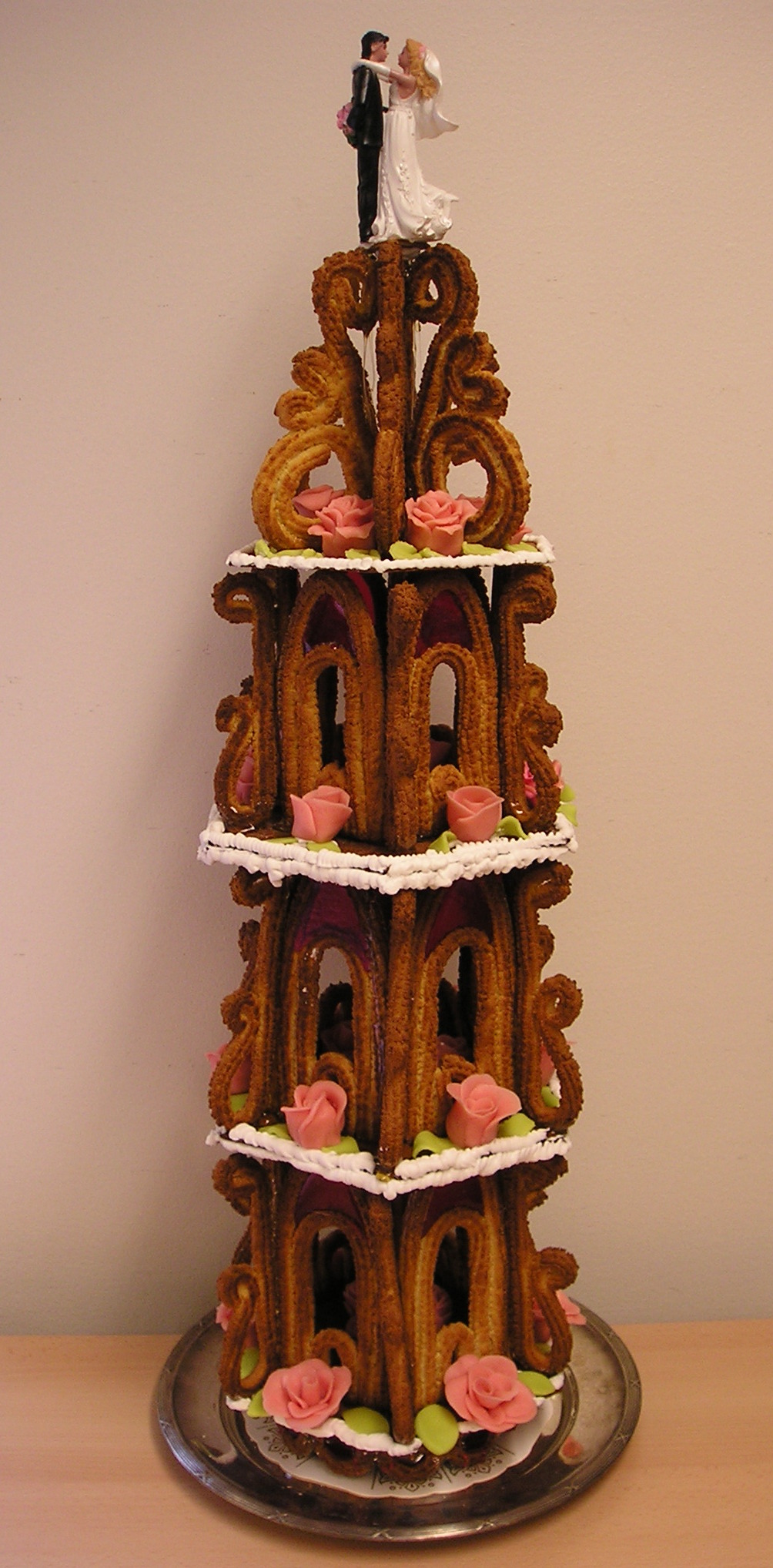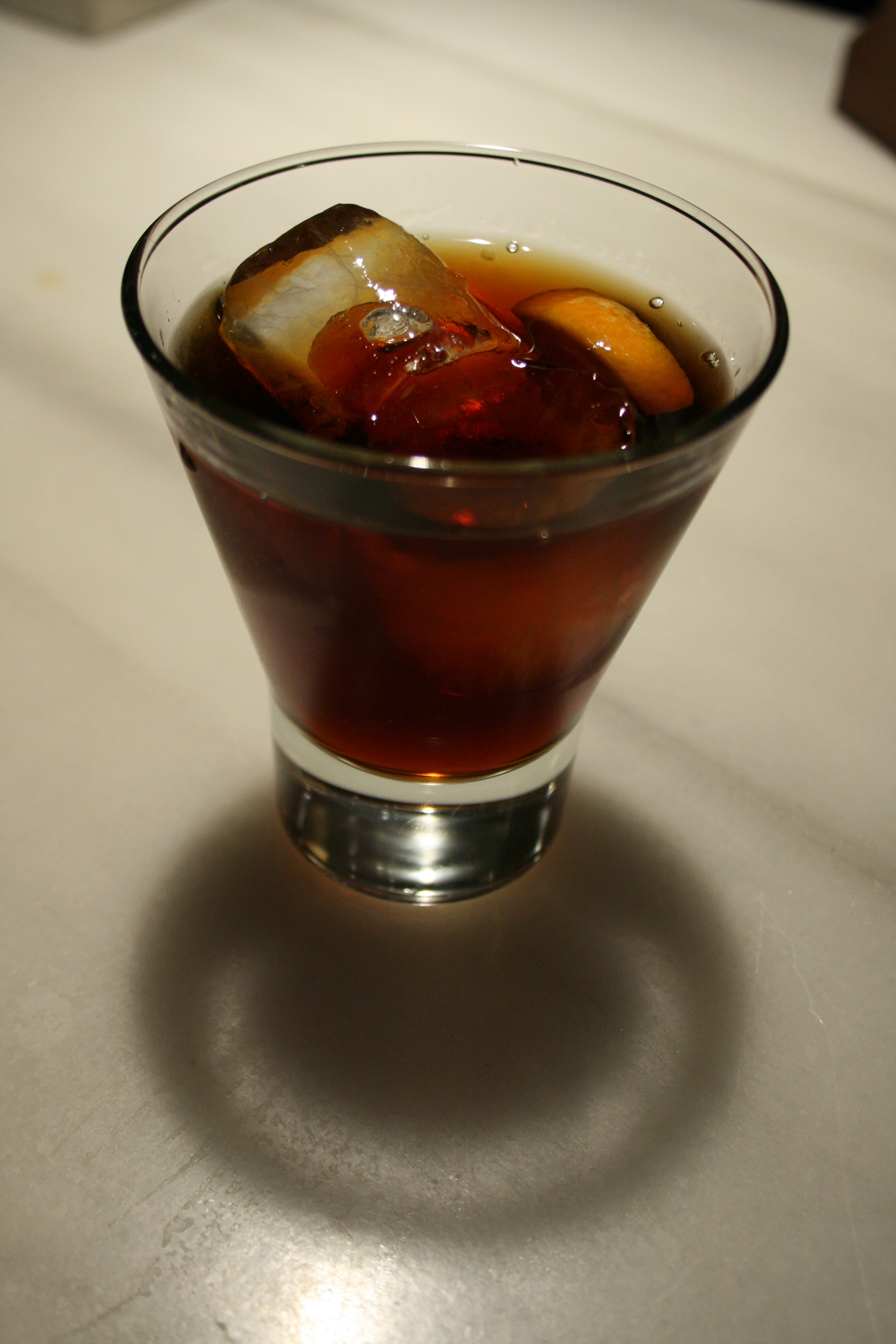|
҆tramberk Ears
҆tramberk ears () is a Czech confectionery product made of cone-shaped gingerbread dough traditionally baked in the ҆tramberk and the surrounding area of Moravia. Protected designation of origin This product could be officially made and sold only at the town area since 2000. In 2006, there were six certified producers. In 2007 this sweet became a Geographical indications and traditional specialities in the European Union, protected designation of origin in EU as first in the Czech Republic. The product is made in ҆tramberk for 800 years. Legend of the origin According to local legend, in the 13th century, during the Tatar invasion, the inhabitants from the whole area found refuge on Kotouńć Mountain, where the Tatars attacked them several times. During the last attack, a storm broke out and flooded the pond above the Tatars' lair, which the local inhabitants took advantage of by digging a dam in the pond and thus flushing out the Tatars. References {{reflist External linksH ... [...More Info...] [...Related Items...] OR: [Wikipedia] [Google] [Baidu] |
Confectionery
Confectionery is the Art (skill), art of making confections, or sweet foods. Confections are items that are rich in sugar and carbohydrates, although exact definitions are difficult. In general, however, confections are divided into two broad and somewhat overlapping categories: baker's confections and sugar confections. Baker's confectionery, also called flour confections, includes principally sweet pastries, cakes, and similar Baking, baked goods. Baker's confectionery excludes everyday Bread, breads, and thus is a subset of products produced by a baker. Sugar confectionery includes candies (also called ''sweets'', short for ''sweetmeats'', in many English-speaking countries), candied nuts, chocolates, chewing gum, bubble gum, pastillage, and other confections that are made primarily of sugar. In some cases, chocolate confections (confections made of chocolate) are treated as a separate category, as are sugar-free versions of sugar confections. The words ''candy'' (Canada ... [...More Info...] [...Related Items...] OR: [Wikipedia] [Google] [Baidu] |
Gingerbread
Gingerbread refers to a broad category of baked goods, typically flavored with ginger root, ginger, cloves, nutmeg, and cinnamon and sweetened with honey, sugar, or molasses. Gingerbread foods vary, ranging from a moist loaf cake to forms nearly as crisp as a ginger snap. Etymology Originally, the term ''gingerbread'' (from Latin via Old French ') referred to preserved ginger. It then referred to a confection made with honey and spices. ''Gingerbread'' is often used to translate the French term ''pain d'épices'' () or the German and Polish terms ''Pfefferkuchen'' and ''Pryanik, Piernik'' respectively ( because it used to contain pepper) or ''Lebkuchen'' (of unclear etymology; either Latin ', meaning "sacrifice" or "sacrificial bread," or German ' for loaf or German for life, '). Pepper is also referred to in regional names like Norwegian ' or Czech ' (originally ''peprník''). The meaning of ''gingerbread'' has evolved over time. For centuries the term referred to a traditiona ... [...More Info...] [...Related Items...] OR: [Wikipedia] [Google] [Baidu] |
҆tramberk
҆tramberk (; ) is a town in Nov√Ĺ Jińć√≠n District in the Moravian-Silesian Region of the Czech Republic. It has about 3,500 inhabitants. It is known for the production of ҆tramberk ears. The historic centre of ҆tramberk is well preserved and is protected as an Cultural monument (Czech Republic)#Monument reservations, urban monument reservation. Geography ҆tramberk is located about east of Nov√Ĺ Jińć√≠n and southwest of Ostrava. It lies in the Moravian-Silesian Foothills. The town is spread on the steep slopes of several hills. The highest point is the hill B√≠l√° hora at above sea level. The town is surrounded by several small-scale protected areas, including the ҆ipka Cave National Nature Monument. This karst cave is the oldest recorded human presence in the territory of the Czech Republic. History The first written mention of ҆tramberk is from 1211, when a village under the eponymous castle was documented. The origin and age of the castle are unknown. In 1359, the t ... [...More Info...] [...Related Items...] OR: [Wikipedia] [Google] [Baidu] |
Moravia
Moravia ( ; ) is a historical region in the eastern Czech Republic, roughly encompassing its territory within the Danube River's drainage basin. It is one of three historical Czech lands, with Bohemia and Czech Silesia. The medieval and early modern Margraviate of Moravia was a crown land of the Lands of the Bohemian Crown from 1348 to 1918, an imperial state of the Holy Roman Empire from 1004 to 1806, a crown land of the Austrian Empire from 1804 to 1867, and a part of Austria-Hungary from 1867 to 1918. Moravia was one of the five lands of First Czechoslovak Republic, Czechoslovakia founded in 1918. In 1928 it was merged with Czech Silesia, and then dissolved in 1948 during the abolition of the land system following the 1948 Czechoslovak coup d'état, communist coup d'état. Its area of 22,623.41 km2 is home to about 3.0 million of the Czech Republic's 10.9 million inhabitants. The people are historically named Moravians, a subgroup of Czechs, the other group being calle ... [...More Info...] [...Related Items...] OR: [Wikipedia] [Google] [Baidu] |
Geographical Indications And Traditional Specialities In The European Union
Three European Union schemes of geographical indications and Traditional food, traditional specialties, known as protected designation of origin (PDO), protected geographical indication (PGI), and traditional speciality guaranteed (TSG), promote and protect names of agricultural products and foodstuffs, wines and spirits. Products registered under one of the three schemes may be marked with the logo for that scheme to help identify those products. The schemes are based on the legal framework provided by the EU Regulation No 1151/2012 of the European Parliament and of the Council of 21 November 2012 on quality schemes for agricultural products and foodstuffs. This regulation applies within the EU as well as in Northern Ireland. Protection of the registered products is gradually expanded internationally via bilateral agreements between the EU and non-EU countries. It ensures that only products genuinely originating in that region are allowed to be identified as such in commerce. The ... [...More Info...] [...Related Items...] OR: [Wikipedia] [Google] [Baidu] |
Czech Republic
The Czech Republic, also known as Czechia, and historically known as Bohemia, is a landlocked country in Central Europe. The country is bordered by Austria to the south, Germany to the west, Poland to the northeast, and Slovakia to the southeast. The Czech Republic has a hilly landscape that covers an area of with a mostly temperate Humid continental climate, continental and oceanic climate. The capital and largest city is Prague; other major cities and urban areas include Brno, Ostrava, PlzeŇą and Liberec. The Duchy of Bohemia was founded in the late 9th century under Great Moravia. It was formally recognized as an Imperial Estate of the Holy Roman Empire in 1002 and became Kingdom of Bohemia, a kingdom in 1198. Following the Battle of Moh√°cs in 1526, all of the Lands of the Bohemian Crown were gradually integrated into the Habsburg monarchy. Nearly a hundred years later, the Protestantism, Protestant Bohemian Revolt led to the Thirty Years' War. After the Battle of White ... [...More Info...] [...Related Items...] OR: [Wikipedia] [Google] [Baidu] |
Czech Cuisine
Czech cuisine has both influenced and been influenced by the cuisines of surrounding countries and nations. Many of the cakes and pastries that are popular in Central Europe originated within the Czech lands. Contemporary Czech cuisine is more meat-based than in previous periods; the current abundance of farmable meat has enriched its presence in regional cuisine. Traditionally, meat has been reserved for once-weekly consumption, typically on weekends. The body of Czech meals typically consists of two, or sometimes more, courses; the first course is traditionally soup, and the second course is the main dish. If a third course is eaten, which mainly happens at more festive occasions, it is usually a sweet dessert or compote ('). In the Czech cuisine, thick soups and many kinds of sauces, both based on stewed or cooked vegetables and meats, often with cream, as well as baked meats with natural sauces (Gravy, gravies), are popular dishes usually accompanied with beer, especial ... [...More Info...] [...Related Items...] OR: [Wikipedia] [Google] [Baidu] |




